Time Shavers
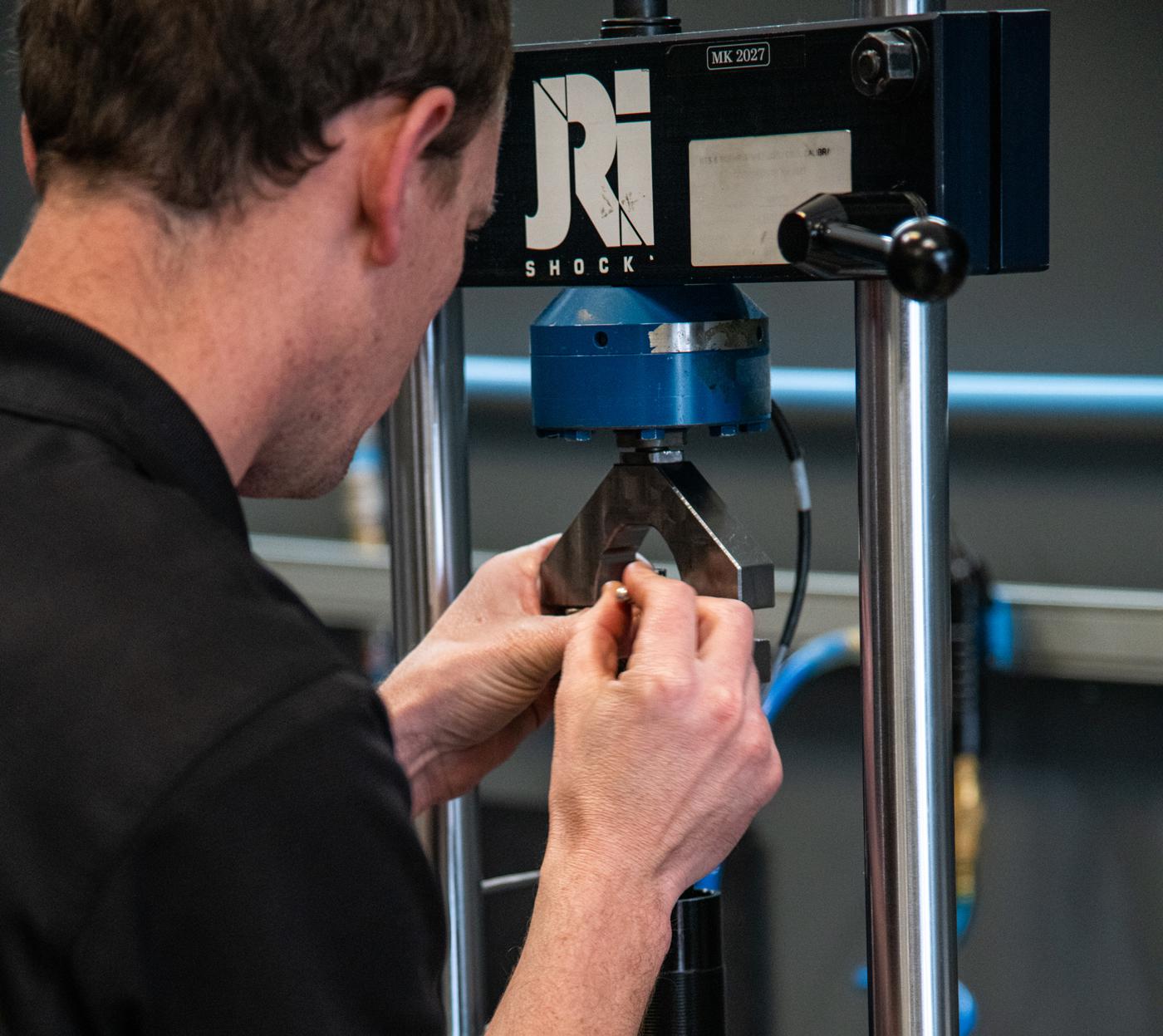
A thorough understanding of how setup strategies—and equipment—can help cut lap times is helping boost sales of scales, shock dynos, and more.
As many racing disciplines have become more limited by grip than horsepower, a stronger focus on chassis setup has developed in turn. But effectively communicating the benefits of this equipment to customers requires more than just a recital of the bullet points.
Although crate classes and those that have more or less untethered engine rules might appear to exist on opposite ends of the regulation spectrum, these days there’s a common refrain that runs through both of them.
“It’s not just a horsepower game anymore,” said Chris Berg of Intercomp, Medina, Minnesota. “On one hand, you might not have the opportunity to put an exotic camshaft into a car, or run some sort of exotic fuel, because that stuff is tightly controlled in spec classes. But since most classes use a spec tire—even if you’re given free rein with your engine combination—you still have a finite amount of grip to work with.”
Either way, simply muscling one’s way to the front of the pack has largely become an antiquated notion. Instead, teams must focus their tuning efforts on other aspects of the car in order to shave time in a manner that’s consistent and repeatable, and that’s led to growing interest in chassis setup strategies as well as a rising demand for the related setup equipment.
But the inherent value of that equipment is more difficult to express than, say, the torque gains of a cylinder head design, or the weight savings of a better material. Instead, effective marketing of chassis setup equipment often requires a hands-on approach and a thorough understanding of how it can improve a team’s race program.
Quantifying Competitiveness
While this equipment might not be considered a mandatory investment for the weekend grassroots racer who’s looking to mix it up for fun, proper chassis setups become more of a necessity as one moves up the ranks of competition.
“This equipment is getting more and more critical to a team’s success,” said Keith Berner of Accu-Force Dynos & Testers, Millersburg, Ohio. “As the racing gets closer and the sport gets more technical, the guys that think they can do setups by the seat of their pants are going to fall farther and farther behind. We’re all now relying on various pieces of chassis setup equipment to figure stuff out to a much more precise degree.”
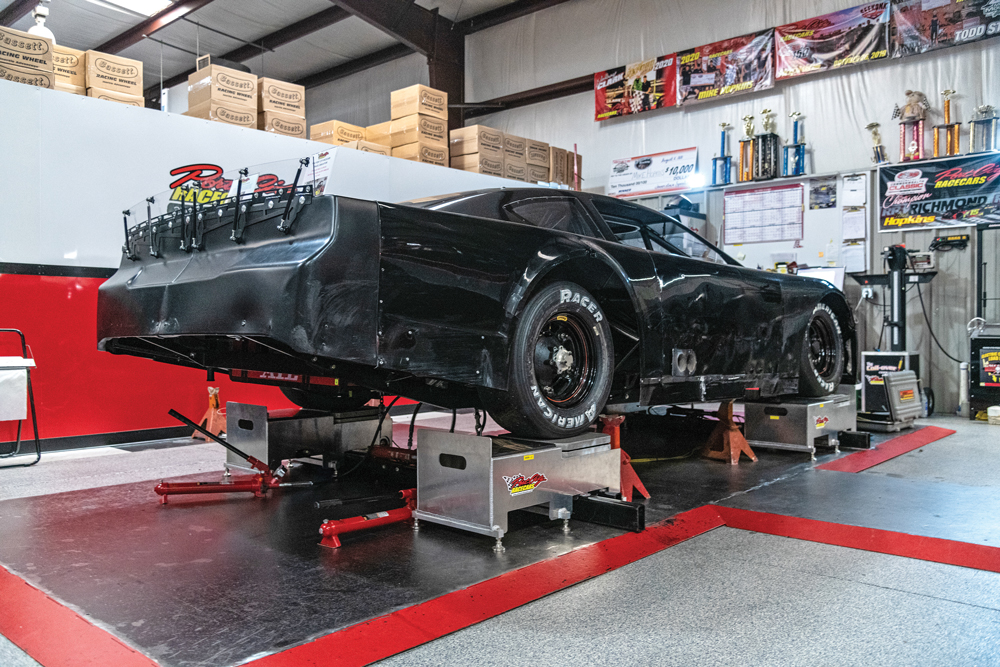
And as Steve Watt of Maxwell Industries in Ventura, California, explained, it’s effectively mandatory in the top tiers of many circle track racing disciplines. “Most of our customers for this type of equipment are USAC National dirt guys and World of Outlaws teams,” he said. “I’d say 90% of the World of Outlaws teams have a shock dyno in the trailer, and most of these teams wouldn’t even go to the race track if they didn’t have either dyno data or a dyno for testing the shocks. It’s incredibly important because they’re so finely tuned today—there’s so many different things going on with the valving, the bleed, and so on. There’s also always new stuff coming out, and these teams want to make sure they don’t get caught out using inferior stuff. Dialing that new hardware in requires this kind of tuning. Most of the teams are now putting their shocks on the dyno between heat races, and they’ll check it again before the feature race.”
Watt added that it often comes down to cost per lap. “If you run a 410 sprint car, your motor program is all based on laps, and every lap you do with a car that’s not as good can be a wasted lap. So the goal is to make everything as dialed in as it can possibly be every time you hit the race track.”
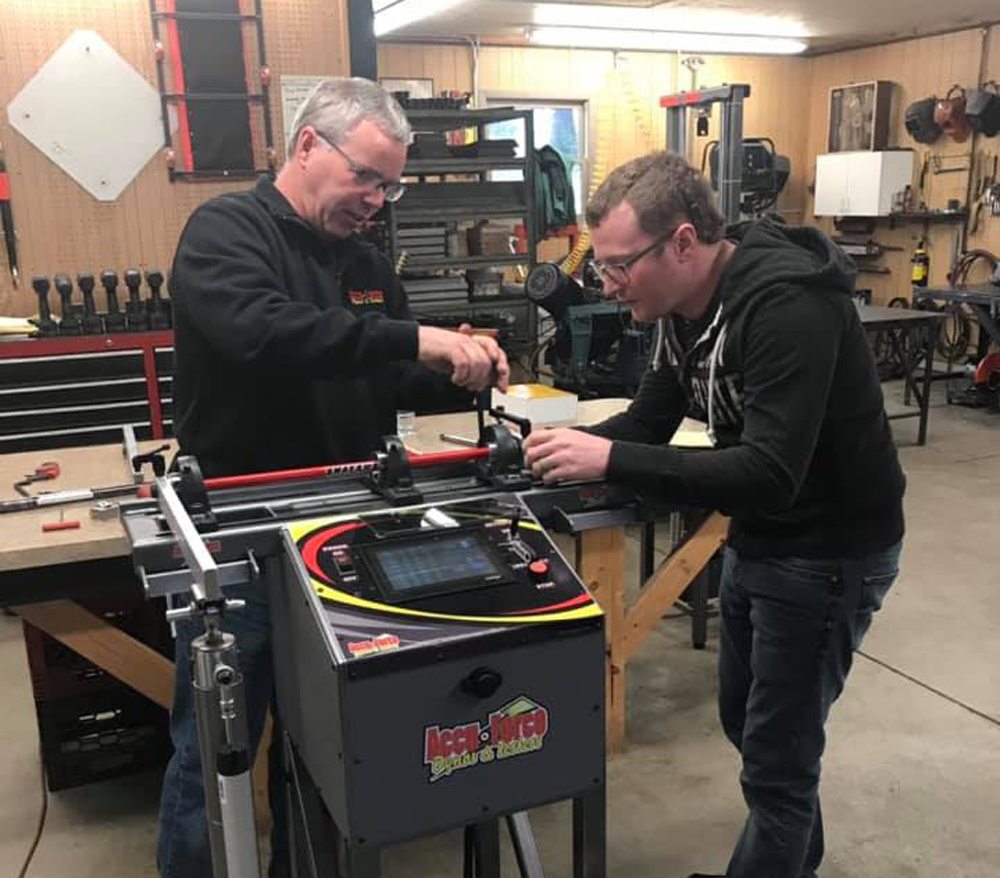
While sophisticated pieces of equipment like shock dynos, spring smashers, and pull-down rigs are all key players in the modern chassis setup arsenal, Ryan Salata of PROFORM in Warren, Michigan, said that vehicle scales still play a key role in chassis setup across a range of racing disciplines, too. “For the teams in oval track, Formula Drift, and even drag racing, it’s a cornerstone of race car setup for a lot of these teams. You can solve a range of issues with these scales by determining things like proper cross weight and percentage distribution, and adjusting the suspension accordingly while taking an individual driver’s preference into account as well. Scales deliver measurements that allow you to see how an adjustment affects a particular spec in real-time. This is one area where buying the right tool for the job pays off in spades.”
Lynnie Doughton of DRP Performance Products in Rocky Mount, Virginia, summed up the general philosophy behind chassis setup in a way that any serious competitor can appreciate. “We’re limited to the rules package that we have and the total amount of grip that’s available,” he explained. “So there are two things that we need to do: First, we need to make sure that we’re utilizing all of the grip that’s available, and the majority of the race cars out there aren’t set up to do that. Second, we need to make sure that we balance that grip properly. If you have too much of the grip up front or at the rear, it’s going to be more difficult to get all of the performance that’s available out of the car. That’s what this equipment allows you to do, and it’s often some of the least-expensive speed that you can find from the race car.”
Getting The Word Out
Because of the inherently technical and nuanced nature of the beast, selling chassis setup equipment is a different proposition than typical racing components, where effective marketing can be as straightforward as a display touting performance statistics.
“For us, it’s been shows like PRI—having people look at and try the equipment in person,” said Salata. “We’ve also gone out to the races with our scales, but what’s tricky is that it’s very easy to get into the weeds in a situation where someone is trying to fix an issue with their particular car. It’s a piece of equipment that captures units of measurement—if they’re standing on it, they understand what it does and the accuracy of it. But I think it’s important not to get too technical with it before someone really understands what to do with those measurements.”
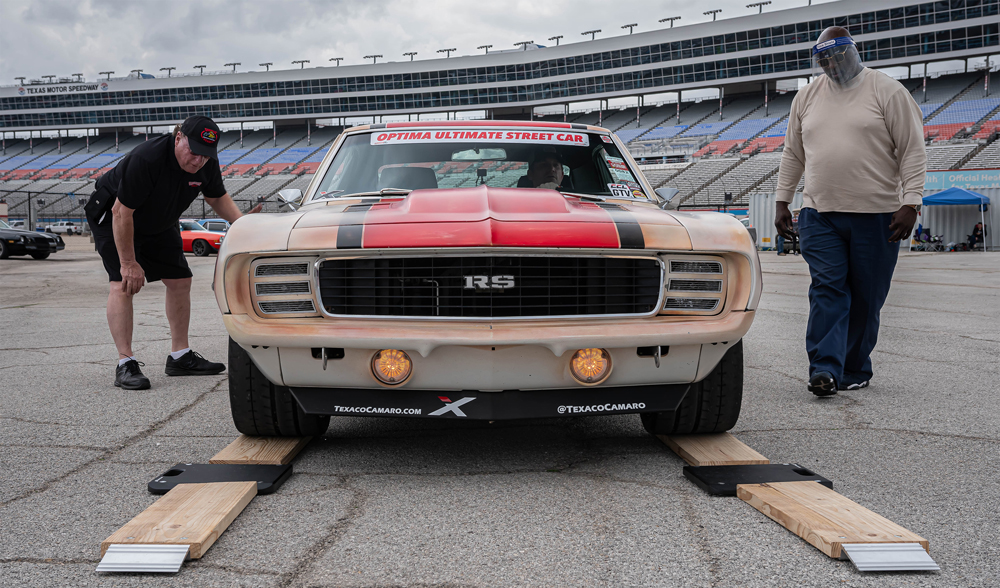
Berg told us that Intercomp has been successfully working with a dealer network. “We have a great relationship with those folks—they’re the ones who’re really out there pounding the pavement. Sometimes they’re out at race events and they’re essentially bringing us along for the ride. I think that a lot of our dealers see our strong brand recognition and want to align themselves with one of the most respected names in motorsport weights and measurements. For our products in particular, I also feel like the racers are often seeking advice from a distributor or company that might be sponsoring a car locally that’s winning at the track—that success attracts those customers to that particular business.”
Watt agreed that, as with many aspects of racing, word-of-mouth tends to be a significant factor. “When my customers win races and championships, it’s the best marketing that we can ask for,” he said.
The Importance Of A Good Education
Doughton noted that the biggest current hurdle in selling chassis setup equipment is knowledge—both on the dealer’s side as well as the customer’s. “The number one reason that more dealers don’t sell chassis setup equipment is because they don’t understand it. It’s hard to sell something when you aren’t fully aware of how it works and what it does. I think in those situations, you’re going to have a tendency not to bring it up—you’re going to avoid engaging in those conversations. If the dealers simply become more knowledgeable about what’s available and the reasons why you’d use some of this equipment, they would naturally sell more of it.”
Berner pointed to tutorials and after-sales support as aspects that can have a sizable impact on the marketability of this equipment, too. “When people buy from us, they have the opportunity to do a tutorial with us where we spend an hour or two with them. We also do longer one-on-one courses for folks who want to go more in-depth. Educating yourself on this equipment is hugely important—like anything else, you don’t know what you don’t know.”
And, as Watt noted, being able to collect data from chassis setup equipment is one thing…knowing what to do with it is another. “Our strongest asset is our service. When a new customer gets a shock dyno, I tell them to give me a call once they’ve got it plugged in and ready to go. I know the software well enough that I can have you running a shock in a minute and a half, and I can tell you what graph to look at to find the data you want. With our machines we can send data back and forth between our equipment and our customers’, so if they’re struggling with something, I can actually send them data off of a shock absorber and they can look at it on their screen as if they just tested it. That way they have all of the information I have, and we can compare that data.”
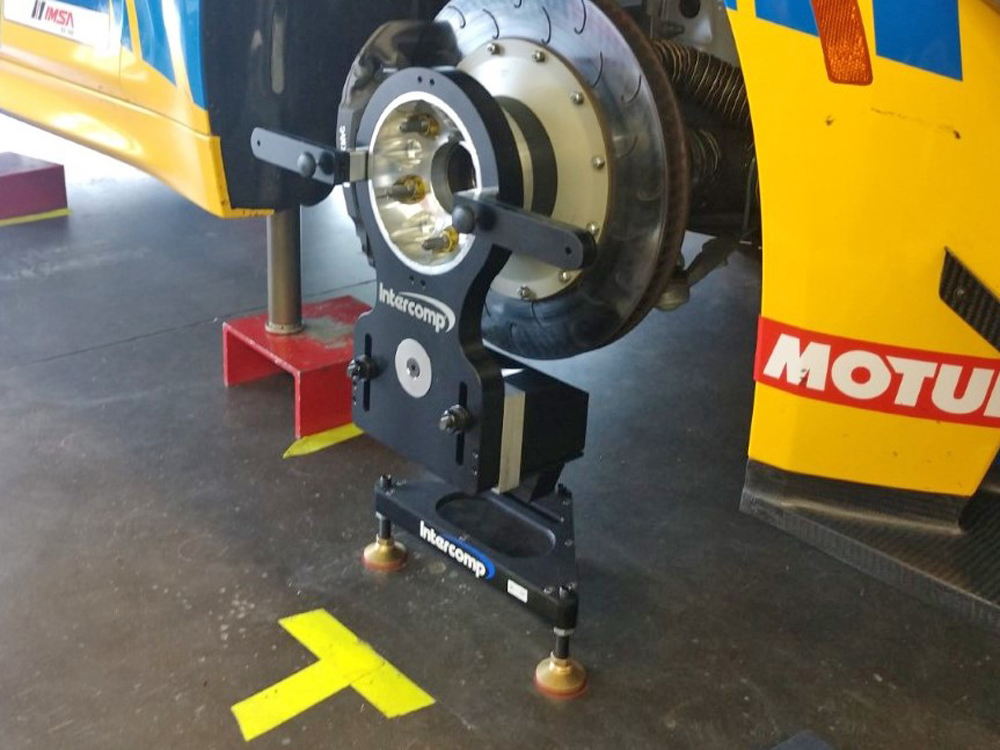
Like many aspects of race car tuning, chassis setup requires time, effort, and experience to yield its full value, but it can pay big dividends for those who have the patience. “It’s a process,” Berg said. “You shouldn’t go into this assuming that you’ll be able to reinvent the car overnight. Consistent performance is what wins races, and that comes with a greater understanding of how to use equipment like this to your advantage.”
SOURCES
–
Accu-Force Dynos & Testers
accuforcetesters.com
Creative Racing Products
creativeracing.com
DRP Performance Products
drpperformance.net
Intercomp
intercompracing.com
Maxwell Industries
maxwellindustries.com
PROFORM
proformparts.com
 MEMBERSHIP LOGIN
MEMBERSHIP LOGIN JOIN PRI
JOIN PRI


